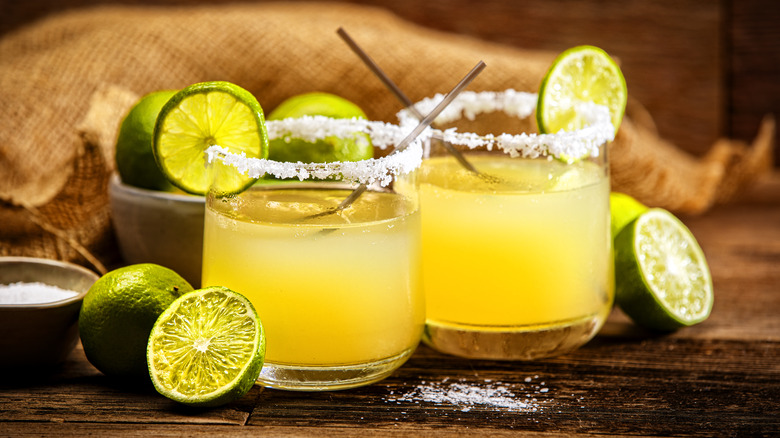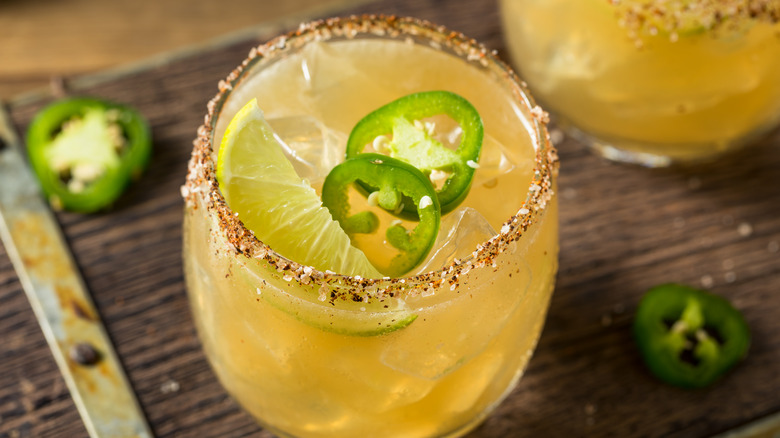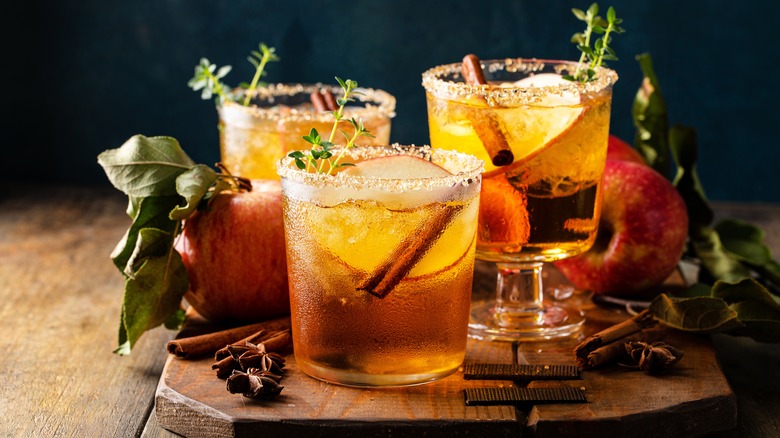The Reason Some Cocktails Have Sugar On The Rim Vs. Salt
When dressing a cocktail, one of the best ways to get some attention is to give your glass a salt or sugar rim. Not only does this make the drink look more appealing, but it can give you a little punch of flavor, too. Salt rims are the most common of the two, but sugar rims are becoming trendy. The reason why some cocktails feature a sugar rim and not a salt rim all comes down to the drink, because salt or sugar can complement and enhance the flavors of your beverage.
Salt can provide a savory or tangy contrast to sour or citrusy cocktails like palomas. Sugar, on the other hand, adds a touch of sweetness that can enhance the taste of fruity or sweet cocktails like strawberry daiquiris. You can also switch them up and add sugar to lemon-based citrus cocktails to give that sour flavor a sweet touch, or you can give a sweet drink, like a watermelon margarita, a salt rim for a salty-sweet taste. The one you choose all depends on the type of flavor you want.
Enhancing flavors with sugar and salt rims
While the main purpose for choosing a sugar rim over a salt rim is to create a preferred flavor profile for your cocktails, there are other reasons to choose one over the other. Rimming a cocktail glass obviously adds visual appeal and makes the drink more enticing, but it can also give your drink a different texture. When you take a sip from a cocktail with a rim, your lips come into contact with the salt or sugar, providing a contrasting texture that can enhance the experience of the drink.
Salt and sugar are the most common ingredients used for rimming cocktails, but there are other creative options you can use to add flavor and visual appeal to your drink. You can experiment with spices like Cajun seasoning or Tajín to add something unexpected to a jalapeño margarita. You can also rim the glass of a lemon drop cocktail with lemon zest to bring out more of the citrus flavor. If you really want to add complexity, mix together some fresh or dried herbs, like rosemary, thyme, or mint, with sugar or salt to create a herb-infused rim on a simple vodka tonic.
To rim or not to rim: when should you skip it?
Ultimately, the decision to use an embellishment for a rim is subjective and can be adapted based on personal preferences. When deciding whether a cocktail needs a rim or not, consider the existing flavors in the drink. Does it have a good balance of sweet, sour, bitter, or savory elements? If the cocktail already achieves a harmonious flavor balance, a rim may not be necessary and could potentially overpower or detract from the drink.
For example, a classic martini is traditionally served without anything on the rim, because the focus should be on the smooth flavors of the cocktail. An Old Fashioned is a whiskey-based cocktail that relies on the rich flavors created from blending the whiskey, bitters, and simple syrup, so a rim embellishment would distract from the drink. Not only should you consider how cocktails like these taste with a rim, you should also think about they would look. If you're aiming for a more sophisticated or minimalist look, a rim may not be necessary.


